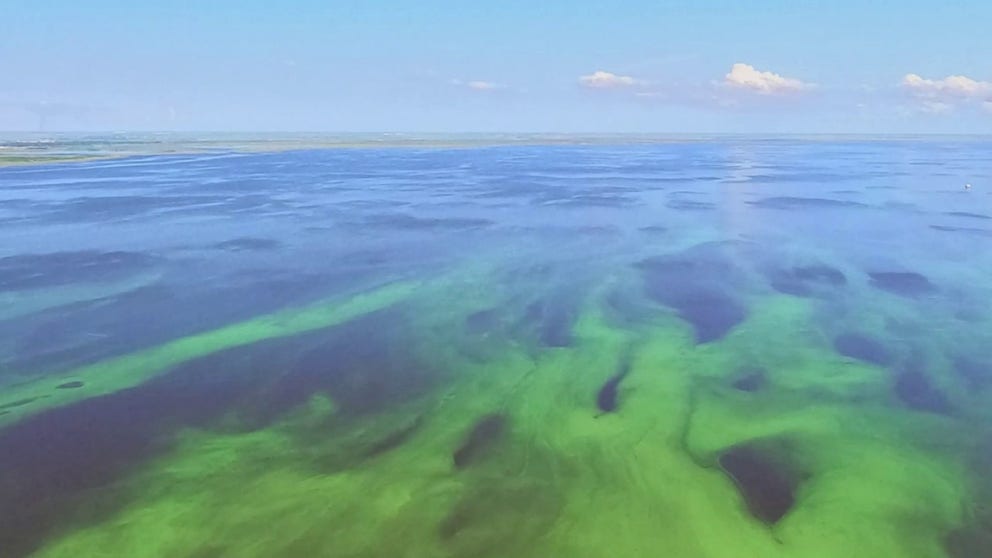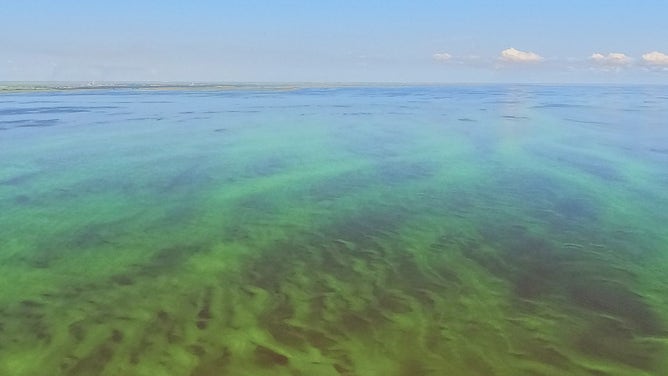Large algae bloom spotted on Florida’s Lake Okeechobee
According to the Calusa Waterkeeper, NOAA estimated that algae now covers over 35 percent of the 730 square mile lake. Health officials advise residents and visitors to exercise caution in and around the lake until further notice.
Large algae bloom spotted on Florida's Lake Okeechobee
The Florida Department of Health has issued an alert for parts of Lake Okeechobee after the presence of harmful blue-green algae was detected.
PALM BEACH COUNTY, Fla. – Residents and visitors to parts of the Sunshine State’s largest lake are being urged to exercise caution after harmful blue-green algae was recently detected by the Palm Beach County Health Department.
Florida health officials sent out an alert warning that an increase in warm temperatures and an excess in nutrients in Lake Okeechobee may be contributing to the algae, which can emit odors and produce toxins.
Algae is common along the freshwater lake, but large blooms can lead to negative impacts on wildlife and people who rely on clean water qualities.
"It is concerning, and unfortunately, it is becoming the norm and, we would like for that to not be the case," said Jason Pim, a volunteer for the Calusa Waterkeeper.
10 LARGEST US LAKES WORTH VISITING DURING YOUR NEXT VACATION
Pim said a vast majority of the pollutants come from runoff of agricultural lands, and due to the scope issue, there is not a significant fix in the works.
A recent NOAA survey determined algae now covers over 35% of the 730 square mile lake, which undoubtedly will continue to increase through the summer.
"The really frightful year was 2018. We’re not to that point yet. What happened that year is that the rainy season started earlier," said Pim.
During wetter seasons, the U.S. Army Corps of Engineers usually releases large amounts of water from the lake, which, if polluted, can lead to blooms entering nearby streams and other ecosystems.
FLORIDA BEACHES SMOTHERED IN SMELLY SARGASSUM SEAWEED WITH PEAK SEASON NOT EXPECTED FOR MONTHS
Experts say blooms are known to block sunlight, which can impact the growth of aquatic grasses and the health of marine species such as manatees.
In 2021, agencies declared the giant sea cows were battling an Unusual Mortality Event that was triggered by the disappearance of essential seagrass along the state’s east coast.
Florida’s annual rainy season has not yet produced the amount of runoff needed to empty Lake Okeechobee into nearby waterways, so issues concerning the most recent bloom are confined to the giant lake for now.
Health officials are encouraging visitors to refrain from drinking, swimming or boating in areas where the algae is present.
People are also encouraged to avoid eating shellfish from impacted waters, and if contact is made with the algae, wash skin and clothing thoroughly with soap and water.
According to the University of Florida, researchers do not have a complete understanding of what triggers some years to be more severe than others but do say this type of algae is not a concern along the beachfront because the organisms cannot tolerate salt water.
Teen photographer captures beauty of Florida's Everglades
Luca Martinez, 17-year-old wildlife filmmaker and photographer, discusses with FOX Weather Wild his mission to gather nature’s best moments from The Sunshine State.





